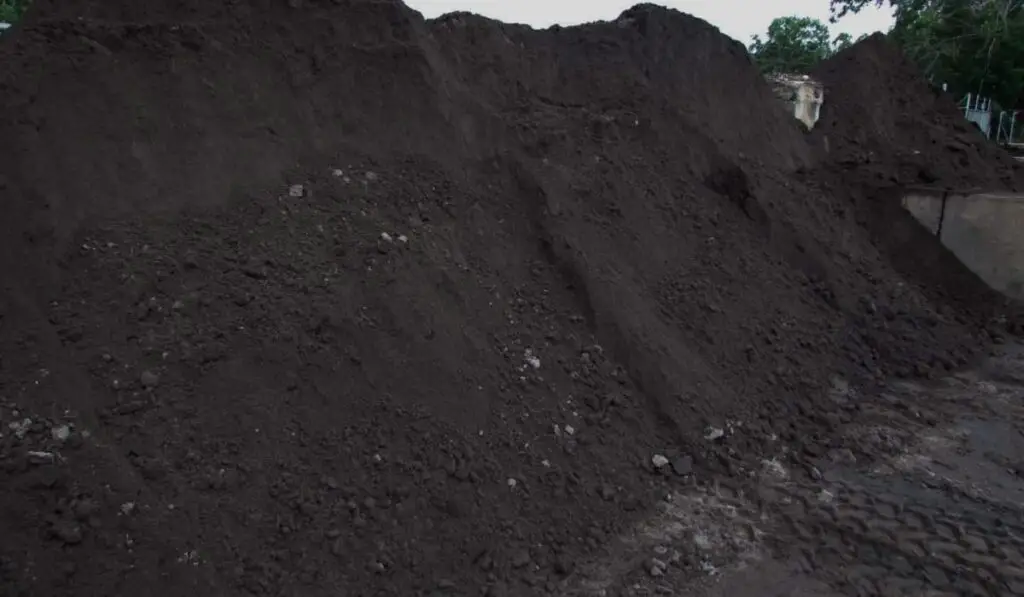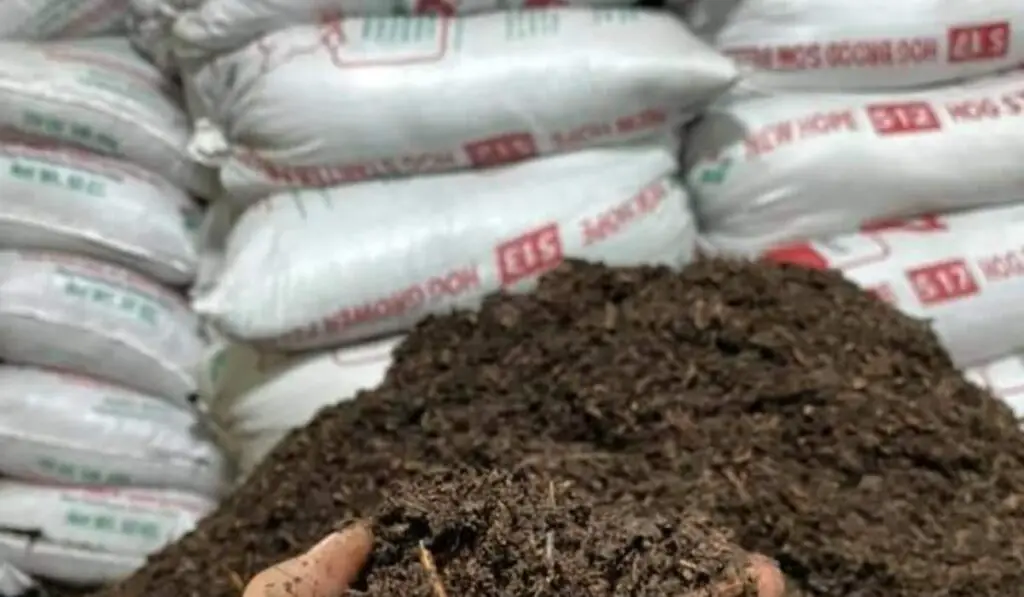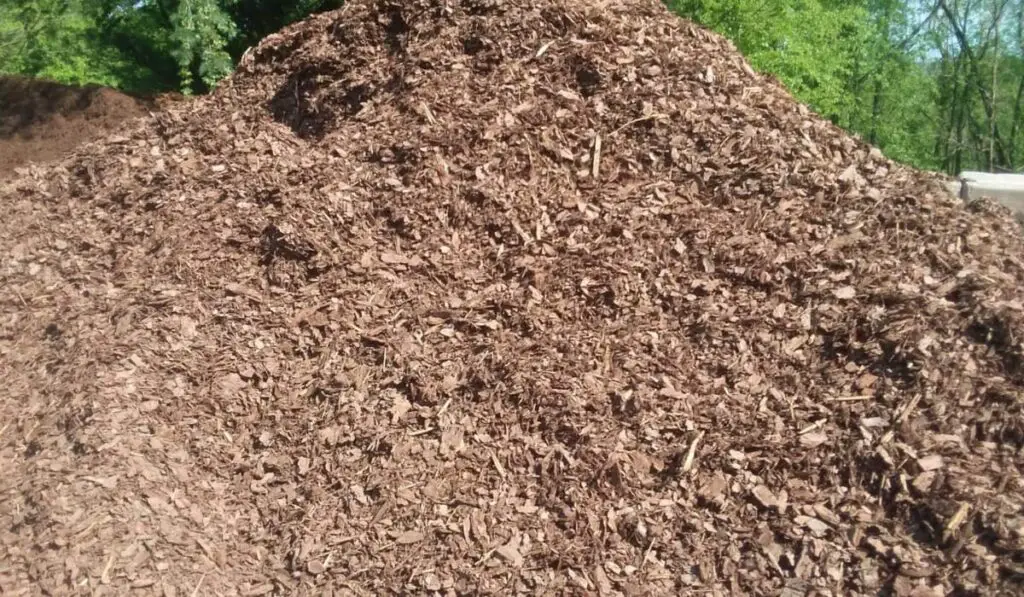Topsoil, mulch, and compost are common words in landscaping and garden projects. But when should you use each?
Apply topsoil as a top dressing to add nutrients to new garden beds or replace soil lost through soil erosion. Use compost to improve the soil texture, restore washed-away soil, and provide your plants with nutrients. Spread a layer of mulch to stop moisture loss from the soil and prevent weeds from growing.
Topsoil, compost, and mulch may be confused regarding their function, but can one replace the other? We’ll look at topsoil vs compost and topsoil vs mulch and how each benefits the soil and your plants.
Contents
What Is Topsoil?
Topsoil is the soil’s upper layer. It has the highest organic matter and microorganisms level, making it the most productive soil layer. Types of topsoil are sand, clay, silt, loam, and peat. Topsoil has these characteristics:
- It’s dark and moist with an earthy smell
- It’s less grainy and more irregular
- It has less sand and clay than the soil underneath

When Should You Use Topsoil?
You may use topsoil anytime, but most gardeners apply it during spring before planting. You can also add it during fall as a top dressing so that the nutrients break down into the soil.
Top soil can be washed away during rainy seasons or scattered during construction. Weeds can also deplete the soil of its nutrients. Therefore it needs replenishment.
Use topsoil on new lawns or garden beds, on damaged portions of your lawn, and in areas destroyed by soil erosion. Adding topsoil enriches the soil with nutrients and gives it a better texture, which improves drainage.
When comparing topsoil vs mulch, it’s prudent to touch on how each process is done. So, how do you add topsoil? Add by spreading it around your shrubs and plants or on top of the garden before or after planting.
You can mix the top soil with compost, peat moss, or manure, then use a rake or a broom to level it. Spray a little water on top to hold it down. If your topsoil is poor quality, you can purchase it or make yours by adding compost.
Don’t use topsoil to fill your containers because it won’t drain well and will make your pots heavy. Use a potting mix for containers.
What Is Compost?
Compost is a blend of decomposing plant and food waste. It consists of three components:
- Greens – such as grass clippings, fruit scraps, and vegetable waste.
- Browns – such as dead leaves, twigs, and branches.
- Water

Quality compost has these characteristics:
- Dark brown and doesn’t smell of ammonia
- Moisture percentage of 68-70 %
- A pH of 7.2-7.8
- Non-sticky or greasy
- It doesn’t contain insects or nematodes
When Should You Use Compost?
Compost is a gardener’s magic. It transforms vegetable peels and other organic kitchen waste into nutrients for your plants. Apply compost in these cases:
- To aerate dense, sandy, or clay soil
- After a storm to restore washed-away soil
- If you grow crops throughout the year, depleting the soil’s nutrients
How do you add compost? When planting seedlings, mix average soil with compost and add it into the seedling’s hole. Top with more average soil and plant your seedling.
For established plants, cover the bottom of the hole with 2inches of compost and add ordinary topsoil. Then mix compost with more soil and layer on top.
If using homemade compost, add it in early spring so that it will have broken down and penetrated the soil by fall. If you’re using commercial compost, add it in early spring too, but just a few weeks before planting because it doesn’t require much time to break down.
Mature compost has a dark rich color and a sweet, fragrant, loamy smell. If it smells of ammonia, it’s not ready.
It also has a smooth and crumbly texture with a few pieces of wood or fibers, but there shouldn’t be intact peels or leaves. A few corn cobs or avocado seed pieces are okay because they take longer to decompose.
Don’t use compost before it’s ready. It will attract pests and use nutrients in the soil, making them unavailable for your plants.
What Is Mulch?
Mulch is a layer of top material applied to the soil to prevent weed growth and moisture loss while keeping your garden aesthetically pleasing. There are two types of mulch:
- Organic – Shredded wood, straw, lawn clippings, leaves, and peat
- Inorganic – Plastic, newspapers, crushed rock, and landscape fabric

When Should You Use Mulch
Spring is the ideal time to use mulch because the weather is warm. Use mulch to:
- Insulate the soil from hot weather, thus preventing moisture loss
- Give your garden beds a polished look
- Prevent weeds from growing
- Provide nutrients to plants when it decomposes
- Provide a home for beneficial organisms like earthworms
Barks, shredded yard waste, and sawdust are the best mulch options. Mulch made of fresh wood may compete with plants for nutrients. It may also contain weed seeds and pesticides.
How do you add mulch? Use mulch on a garden bed without weeds and lay it about four inches deep.
If your garden has weed seeds, use the double-mulching technique to prevent the seeds from sprouting. To use the method, spread newspapers on the garden beds before laying the mulch on top.
Topsoil vs Mulch vs Compost: What’s the Difference?
Topsoil and compost are both products of decayed matter. They are rich in nutrients and beneficial microorganisms.
Topsoil is best for adding nutrients to the soil or replacing soil lost through erosion. Most plants concentrate their roots on this layer.
Compost acts as a top fertilizer and is also used to improve your soil’s quality by aerating it. Compost is not topsoil. It can be used to improve topsoil but can’t replace it.
Using topsoil alone reduces soil performance, especially in inert soil with little organic matter. Add compost to improve its quality.
Besides using it for beauty purposes, mulch keeps your soil intact. With time, it will break down to provide nutrients for your plants.